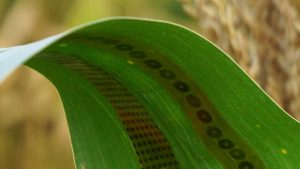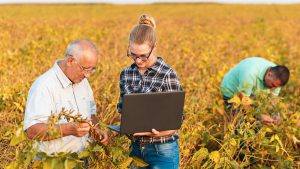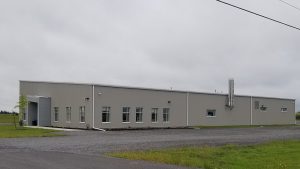Autonomous technology
IN THE FIELD WITH DOT
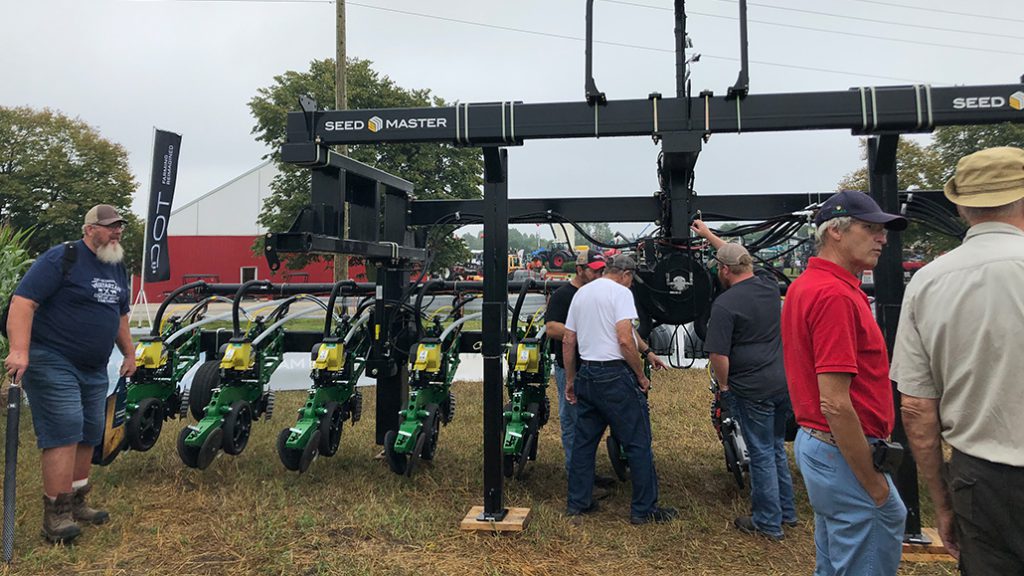
IF YOU WENT to Canada’s Outdoor Farm Show (COFS) in September, you likely met DOT — the autonomous tractor making a name for itself.
There is a lot of hype and excitement about DOT which could potentially ease some of the stress that comes with operating a farm. DOT’s autonomous technology was created with the family farm in mind. With farms expanding in size, and fewer workers to get all the jobs done, innovators are looking at new ways to utilize the latest technologies on the farm.
WHAT YOU NEED TO KNOW
|
Ontario farmers are early adopters of new technologies with auto-steer, GPS guided equipment, and most recently variable rate planters and fertilizers being utilized to increase efficiencies in the field. An autonomous tractor that frees up a farmer’s time to do other tasks, could be the next concept to become common-place on today’s farms.
According to RBC, Canada’s agriculture sector is facing a massive labour shortage. Within the next decade, RBC is predicting a shortage of 123,000 workers in the industry. That means farmers could be working even longer hours, unless the way in which farmers operate changes (see page 28 for more on the changing demands for agricultural labour).
SOLO OPERATIONS
You might be wondering about the origins of DOT.
“DOT is named after my mother. She raised nine children and was always multitasking — like DOT in the sense that it is always multitasking while it works,” explained Norbert Beaujot, president of Dot Technology Corp., during the demonstration at COFS. “DOT is there to save farmers time, labour, and costs by being the autonomous powered platform that’s able to support and adapt to other implements.”
DOT has a 4.5 L turbocharged diesel engine with 175HP. That engine runs four hydrostatic pumps for each wheel and one for implement operation. Each wheel has hydraulic motors running a gearbox that runs DOT smoothly during any process.
If DOT gets stuck in a wet field, a sight we saw frequently with many farmer-driven tractors during the 2019 planting season, DOT will stop whatever it is doing and can be pulled out. But the machine is designed to avoid getting stuck by analyzing slippage and taking mud sinking measurements. If DOT doesn’t like the geography that it is on, it will be avoided.
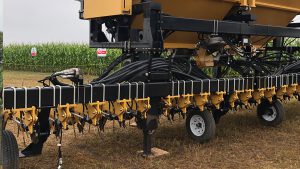
With its U-shape design, the machine will line itself up with the implement and attach itself with some assistance from the operator. DOT will turn the tires depending on which DOT Ready™ attachments are to be used — it can be used as seeder, sprayer, or spreader. According to DOT’s manufacturers, because you load the implement directly onto DOT, there is an overall reduction of weight.
DOT uses both GPS and wifi to steer itself around the field. It is continuously taking pictures of what is going on around it so that it can make decisions. However, DOT specialists will work with any buyer of this technology to map out the fields it will be used in to provide initial guidance. Ensuring that field mapping catches each hill, pothole, power pole, headland and anything else that might be in the way, will set the proper boundaries for safe operation of the equipment.
FIELD TO FIELD
While DOT can drive safely around your field, DOT is not yet ready for the roads. DOT must be transported by truck to and from different fields. DOT’s creators are working to make it street legal.
The machine will work for many farm activities, but is best suited for a medium-sized farm. The engine size is selected to work efficiently and could seed the land area on a large farm, but to make it worth your while, for the larger farms, two OT’s working together is recommended. DOT will be field-ready in 2020, with the unit costing $350,000 USD and attachments between $150,000 to $250,000 each.
The concept of an autonomous tractor is not a new one — all the major equipment manufacturers have been working on their own versions since the early 2000s. Case IH unveiled their latest autonomous concept vehicle in 2016, and more recently, John Deere announced it had developed a fully electric autonomous tractor. Both companies continue to showcase these innovations at farm shows.
Many people still have reservations about autonomous technology — not only in the field but on the roads. The systems used to provide autonomy continue to evolve and as we all become more comfortable with the technology, wider adoption will make it more. •























